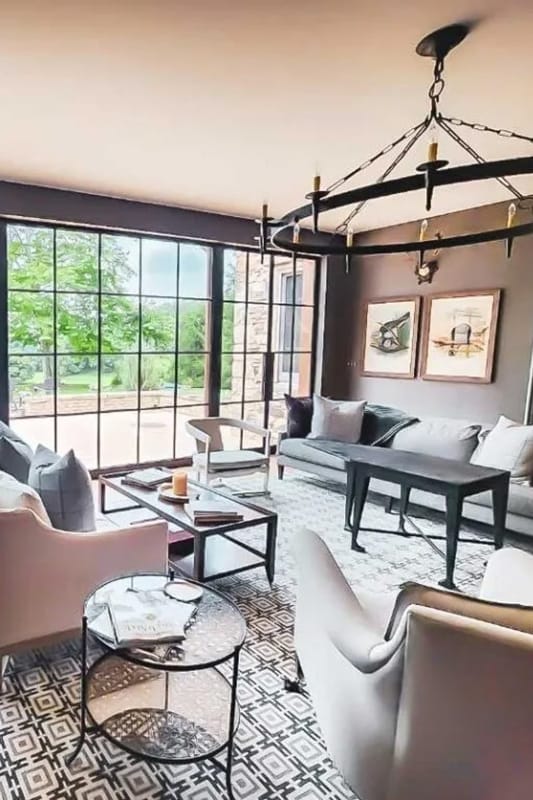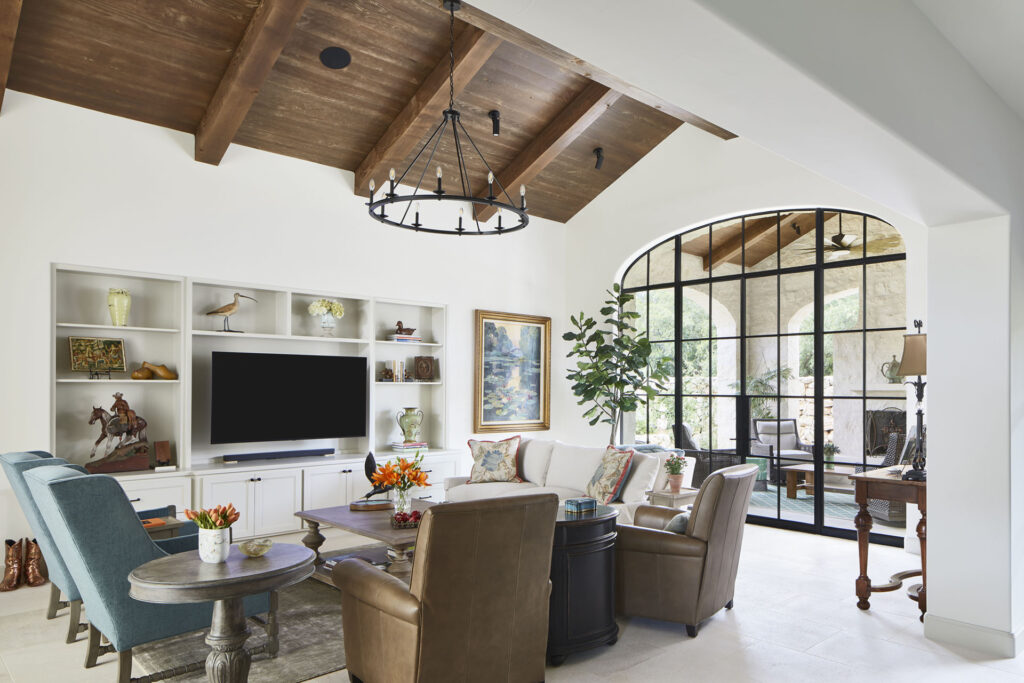Steel windows are almost always the first consideration for any architect or contractor looking to specify metal windows into a building.
Steel has been the material of choice for metal windows since the mid-20th century, with advances in technology delivering greater design flexibility, durability, and production volumes.
But that same technology – coupled with greater environmental awareness – has also seen bronze windows emerge as a viable alternative, competitive in price and offering some attractive benefits steel cannot.
In this blog, we’ll be taking a look at bronze vs steel windows, comparing the features and benefits of each to help architects and homeowners make an informed choice.

What’s the difference between bronze and steel?
Bronze and steel are both metal alloys.
Steel
Steel is an alloy of iron and carbon that has been heat treated to enhance its strength and fracture resistance. It is extremely strong and hard, and can be used to create structural and decorative forms.
A drawback of steel is that it corrodes readily – it will turn rusty when exposed to the elements and can rot away if not protected, especially in coastal locations. For this reason, steel used to manufacture windows and doors needs to be galvanised to protect it against corrosion.
Bronze
Bronze is an alloy of copper and tin. It is also extremely hard and strong, although it is slightly softer than steel, which means it can be cast or extruded into very fine decorative and also structural forms.
Bronze is a naturally corrosion-resistant metal alloy, which means that it does not rust or rot even when exposed to challenging conditions such as salty air or water.
For this reason, bronze has historically been used for outdoor sculptures, including the Statue of Liberty. The green-gray color of Lady Liberty is an example of natural bronze patina – a natural process that causes oxidation of the bronze surface. The development of this patina protects the underlying metal from the elements, ensuring it never degrades, even after hundreds of years.
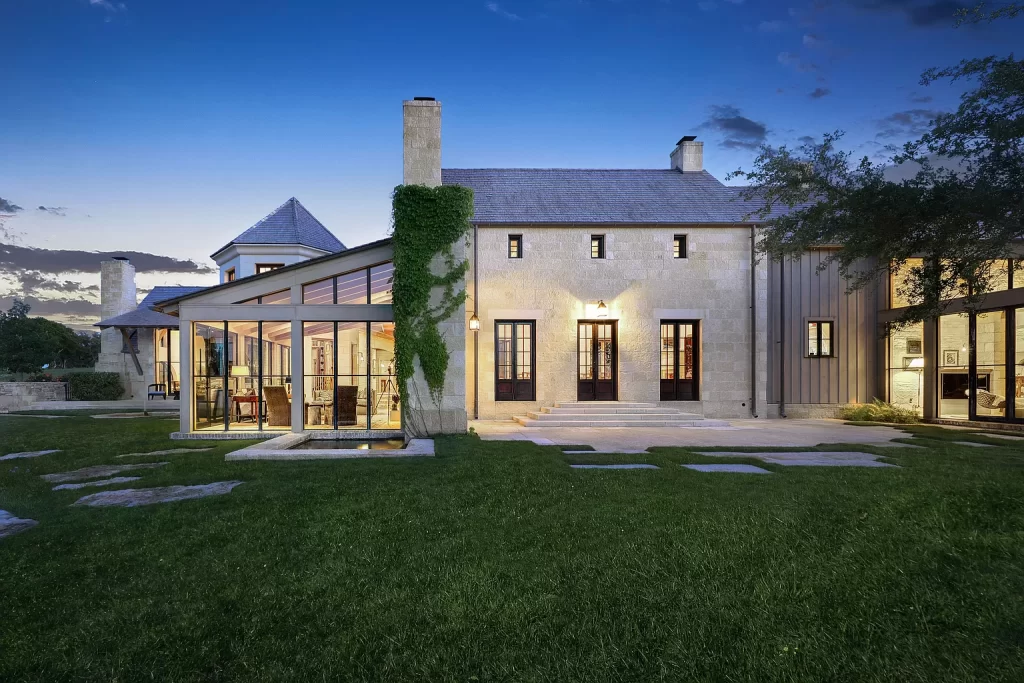
How long do bronze and steel windows last?
As we’ve seen, the natural patina process of solid bronze is such that the metal protects itself against the elements. Bronze patina develops to a certain point on the raw metal and then stops – it doesn’t continue to grow outwards and neither does it eat into the underlying metal. This means that bronze windows can last indefinitely, perhaps even for centuries.
The longevity of steel windows will depend on the manufacturing and fabrication processes used. Factory-style windows are typically manufactured using the hot-rolled process, which gives a texture to the surface of the metal, and this can give rust and corrosion more of a foothold than cold-rolling, which typically produces a smoother finish that can last longer.
Galvanization will also extend the lifespan of steel windows by preventing corrosion. Hot-dipped galvanised steel has a coating of zinc carbonate applied to its surface – but this too breaks down over time, with a life expectancy of around 70-75 years before corrosion begins.
For this reason, bronze windows are more strongly associated with heritage architecture.
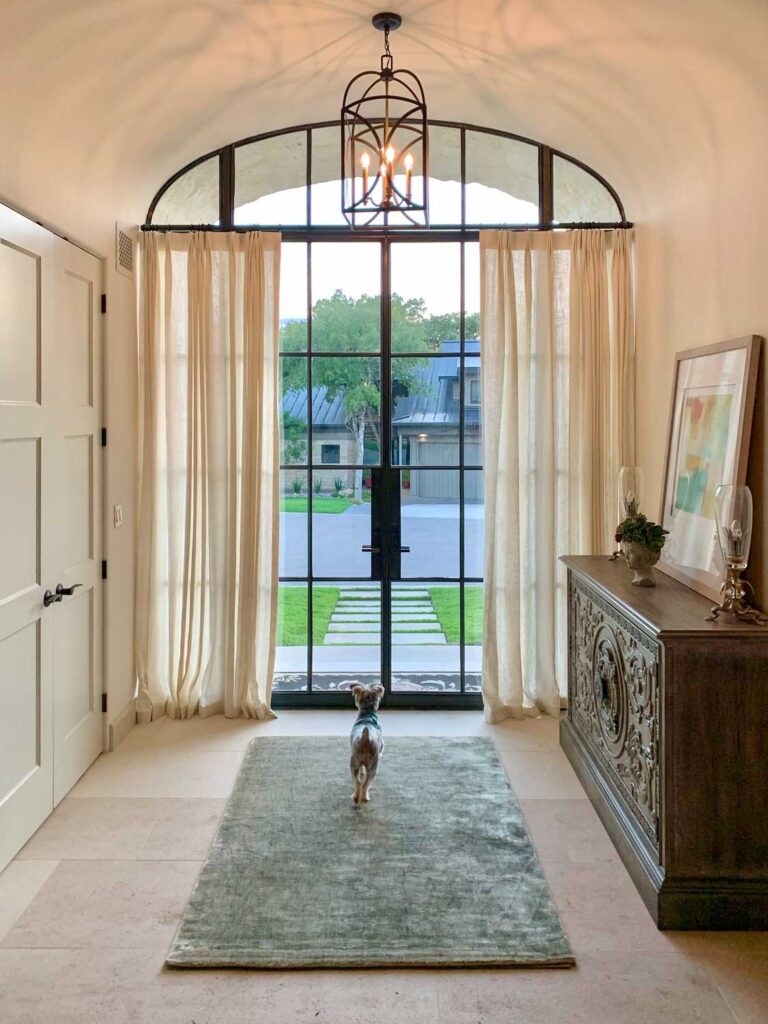
The history of bronze vs steel windows
When it comes to traditional materials for metal windows, steel and bronze have a somewhat intertwined history. While bronze has been around a lot longer than steel (dating back to 4,000BC) both were used to manufacture windows in pre-industrial times.
But by the early 20th Century, a chasm had emerged between the markets for steel and bronze windows. Post-WW1, timber was in short supply, and steel presented an opportunity for windows and doors to be mass-produced more cost-effectively as nations sought to rebuild. Before long, they became the glazing of choice for modernist architecture, found in all kinds of buildings from factories to houses.
Bronze, meanwhile, was regarded as a more decorative and luxurious metal. It was – and still is – ubiquitous in the manufacturing of grilles, elevator doors and door furniture, although some examples of functional windows and doors exist too.
The famous Columbus Doors at the US Capitol were cast in bronze in Munich and imported in 1863, while in the 1980s, a refurbishment of Manhattan’s Supreme Court building saw a set of bronze windows commissioned to replace originals dating back to the early 1900s. Bronze was typically specified into banks, government buildings and estate houses where architects sought to convey prestige in their designs.

What are the aesthetic differences between bronze and steel windows?
Today, bronze and steel windows share many aesthetic qualities that make them sought-after by architects and designers. The innate strength and hardness of both metals means they can be used to create very slender forms with narrow sightlines that look much more elegant than timber windows, while also allowing more light to get in.
The main aesthetic difference between bronze and steel windows has to do with the patina and overall color of the bronze. Galvanized steel typically has a gray or silvery finish that is cool in tone and looks industrial or contemporary. While this works well for modern and utilitarian architecture styles, it can look out of place on historic buildings or heritage-style architecture. Achieving a different color means the steel has to be painted, and then repainted on a regular basis throughout its lifespan.
Solid bronze, meanwhile, has a natural, golden color that is much softer and warmer in appearance than steel. When allowed to patina naturally, this will age to a soft greenish-gray color – but the final color can be influenced by a factory patina process that involves placing the raw bronze in a chemical bath. We offer five standard bronze patina shades that allow this versatile material to adapt effortlessly to any architectural aesthetic, from period restorations to contemporary city dwellings.
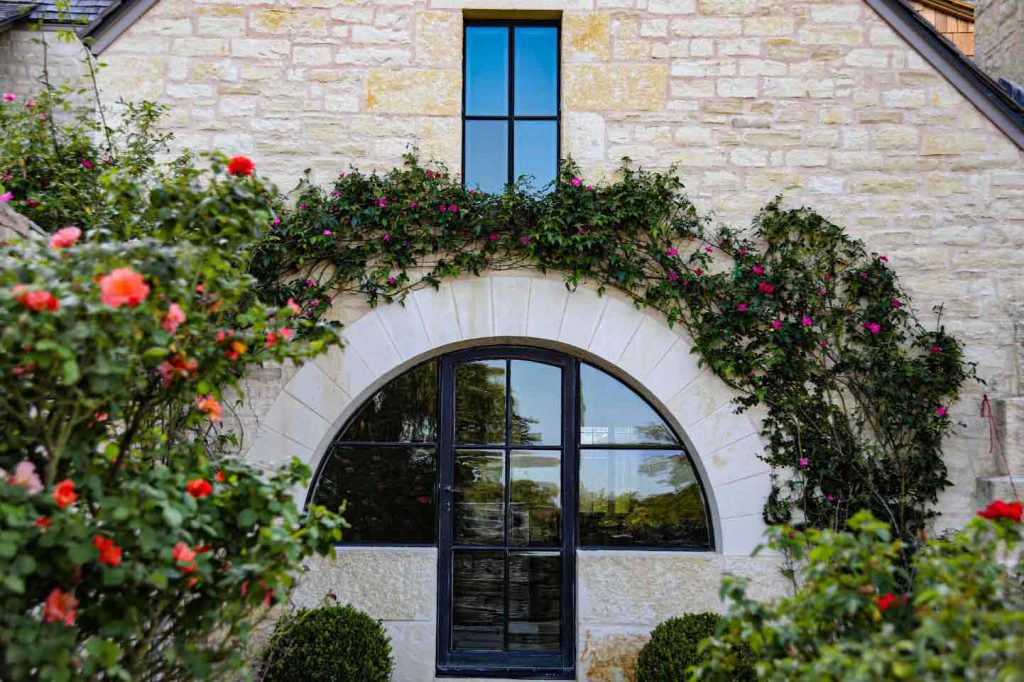
Are there any design constraints on steel vs bronze windows?
The main design constraint when choosing steel windows over bronze is related to volume. Most steel window manufacturers buy their steel extrusions in large volumes via a distributor which means it’s difficult, if not impossible, for them to produce low-volume, bespoke steel assemblies to meet a specific design challenge.
Steel is typically less malleable than bronze, which means it can be more challenging to produce unusual forms. But the biggest design constraint relates to the functionality of bespoke bronze window and door systems, particularly in relation to active doors including pivot, sliding and folding door systems.
At Renaissance, we design these on a project-by-project basis so every piece is unique and tailored to the property, with incredible attention to detail that comes right down to features like bespoke weatherstripping grooves with replaceable seals, and advanced thermal break technology.
Is there any difference in the thermal efficiency of bronze vs steel windows?
Bronze and steel are both metals and therefore are good conductors of heat, with bronze being a better conductor than steel. But since bronze is more ductile than steel, it’s also possible to create more complex extrusions and more advanced thermal breaks than with steel windows.
The fact remains that many steel and aluminum windows sold today are not thermally broken at all. You can read more about the importance of thermal breaks and the system we use at Renaissance GSB here.
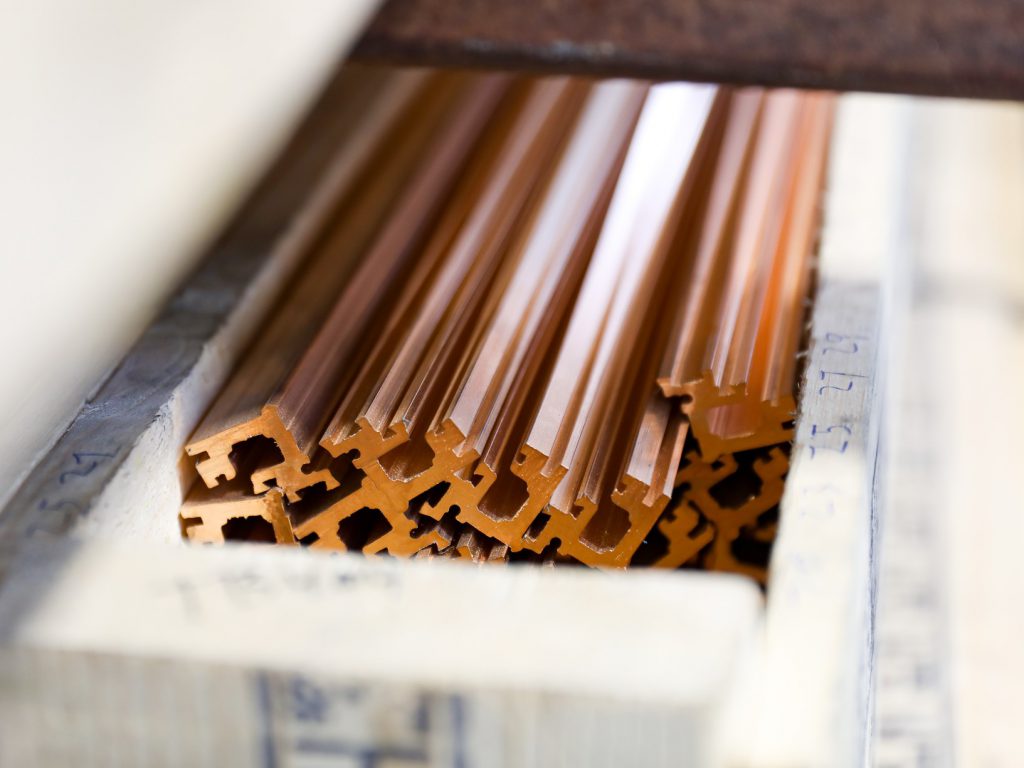
How much maintenance do bronze and steel windows require?
All windows require maintenance to keep them weathertight and in good working order. This includes regular maintenance of moving parts like hinges, latches and locks, as well as upkeep of waterproof sealants and weatherstripping designed to prevent moisture ingress.
In terms of maintenance of the metal itself, solid bronze windows really don’t require any maintenance at all except for cleaning to remove any build-up of dirt and environmental pollutants that accumulate on the surface and prevent it from looking new.
Steel windows, on the other hand, do require maintenance of the metal itself – specifically the surface finish. Most steel windows have a paint or lacquer coating applied and this will need to be reapplied at intervals throughout the lifespan of the product, increasing the overall cost of ownership.
However, even when this maintenance is carried out routinely, it’s common (especially in coastal locations) to see steel windows dripping rust on the inside due to water vapor entering the hollow body of the frame and corroding the steel inside – which is why galvanizing is so vital. We’ve seen ungalvanized steel windows deteriorate in a coastal environment in as little as five years.
What about sustainability – is bronze or steel better for the environment?
Bronze and steel are both recyclable materials, and a large percentage of the bronze and steel products being manufactured today are made from reclaimed and recycled material, making both of them a sustainable choice. At Renaissance Genuine Solid Bronze, around 90% of our bronze is recycled and we’re always looking at ways to increase that even further.
Where our bronze windows really take the lead against steel windows in terms of green credentials is in the manufacturing process.
American made
First and foremost, we have a US supply chain for our bronze extrusions and
windows, doors and bronze enclosure systems are manufactured here in San Antonio, which keeps the carbon footprint of our solid bronze products as low as possible.
Cleaner & greener
Secondly, bronze is greener because it doesn’t need to be galvanized to protect it against corrosion. Galvanizing is a hot, dirty and smoky process that produces a number of airborne and liquid by-products that are harmful to the environment on disposal and very difficult to clean up. Because of this, many galvanizing plants are moving overseas where their environmental obligations are less – and therefore we’re seeing greater quantities of steel being galvanized offshore and then shipped to the US, with a corresponding increase in carbon emissions.

Are bronze windows a lot more expensive than steel?
This is the number one concern of any architect or indeed homeowner weighing up the differences between solid bronze and steel windows – aren’t bronze windows prohibitively expensive?
The answer is no – and we’ll explain why.
At the time when we entered the bronze windows market, steel was pound for pound about a quarter of the raw material cost of bronze, which translated to about half the price for a finished steel window compared to the bronze equivalent.
Mill direct
Since then, we’ve worked extremely hard to bring that cost down by introducing efficiencies on the manufacturing side. This process begins with buying our bronze extrusions directly from the mill, not via a distributor, which allows us to have complete creative and technical control while also buying our bronze at the most competitive price.
In-house processes
Once we take ownership of the extrusions, the entire process – from assembly to glazing to patina finishing and even shipping – is handled in house as part of a lean manufacturing system that is highly streamlined and cost effective.
This means we can offer our solid bronze window and door systems at an investment only 10-15% higher than the cost of an equivalent quality steel window – an additional cost that is not only justified by the infinitely superior quality and longevity of bronze, but also in many cases offset by the convenience of choosing Renaissance GSB.

Complete & ready to fit
In addition, our bronze windows and doors are supplied complete and ready to install – they are fully glazed and assembled, with all hardware already installed, plus integrated nail fins and weatherstripping. In the case of many premium steel windows, you’ll receive only the frames to site – then you’ve got to look for a someone to install the glazing, someone else to attach the hardware and perhaps even another trade to complete the install, so a good chunk of that purchase price can be offset during construction simply by choosing Renaissance.
Reduced cost of ownership
Then there’s the cost of ownership mentioned earlier – bronze windows are virtually maintenance-free compared to steel windows, and the lifespan is considerably longer, so if you consider the cost of windows as an investment for the life of a property, bronze windows can be an extremely cost-effective option.
Want to find out more?
If you’re considering bronze windows for an upcoming architectural project and you’d like more information or design and specification guidance, we’d be only too happy to help. Our expert team is on hand with general advice or support with bespoke design – contact us to find out more.
Frequently Asked Questions
What are the long-term maintenance costs of bronze vs steel windows?
The long-term maintenance costs of steel windows are mostly related to protecting the metal against rust. Modern steel windows are usually hot-dipped galvanized and then powder coated – and this powder coating needs to be topped up every 10-15 years. For older or site-painted windows, repainting every 3-5 years may be necessary to reduce the risk of corrosion. If your steel windows are dry glazed then the rubber gaskets will also need to be replaced every 5-10 years, depending on climate. Annual checks are required to keep on top of any problems before they take hold.
Long-term maintenance for bronze windows is much simpler. Our windows do not need to be refinished or repainted since their natural patina coating protects them from corrosion. They are also wet glazed, so there’s no risk of decaying gaskets and leaks over time. All that’s required is basic cleaning, and oiling of moving parts, to keep them in pristine condition for decades. Our annual servicing program can take care of this for you if you wish, for total convenience.
How does corrosion resistance differ between bronze and steel in coastal climates?
Steel windows are sometimes galvanized to enhance their corrosion resistance, but this galvanized coating in turn needs to be protected with paint or powder coating. As this surface coating degrades, it needs to be reapplied – a costly and time-consuming process that needs to be repeated on average every 8-10 years throughout the lifespan of the windows. Bronze windows, by contrast, form a natural patina that protects the material – so they never need to be repainted or refinished. While bronze has a higher upfront price, its low maintenance makes it more cost-effective over the life of the building.
Is bronze or steel more energy efficient when using larger glass panels?
Steel’s strength allows for very thin window frames and large glass panels, maximizing natural light. Issues around energy efficiency arise because steel is highly conductive – so a thermal break is required, but harder to construct in steel. This is because unlike bronze, steel window frames are rolled rather than extruded – which makes incorporating a thermal break more material intensive and leads to thicker frames. Our bronze window profiles are extruded, which allows us to precision engineer the channels for our thermal breaks using the smallest amount of material possible, for best-in-class sightlines and industry-leading thermal efficiency, even on oversized windows.
Which material (bronze or steel) holds value better over time in restoration or heritage architecture?
Bronze has been used in architecture for centuries and remains the preferred choice for heritage and restoration projects. Its timeless aesthetic, corrosion resistance, and longevity make it a material that enhances property value over generations. Steel is well suited to modern industrial designs, but in restoration or period architecture, bronze holds unmatched cultural and financial value.
